#Jane O’Connor
Text

Sinead O’Connor by Jane Brown
41 notes
·
View notes
Text
The grandmother at the end of Flannery O’Connor’s “A Good Man is Hard to Find” 🤝 the Bertrams after a decade with Fanny
in this essay I will
#where the Bertrams are redeemed by all the havoc caused by the Crawfords#mansfield park#jane austen#flannery o’connor#yes it’s a stretch#but the thought got me to read the story again#which I remember absolutely horrifying me in high school English class#well worth the reread#still horrifying
2 notes
·
View notes
Text
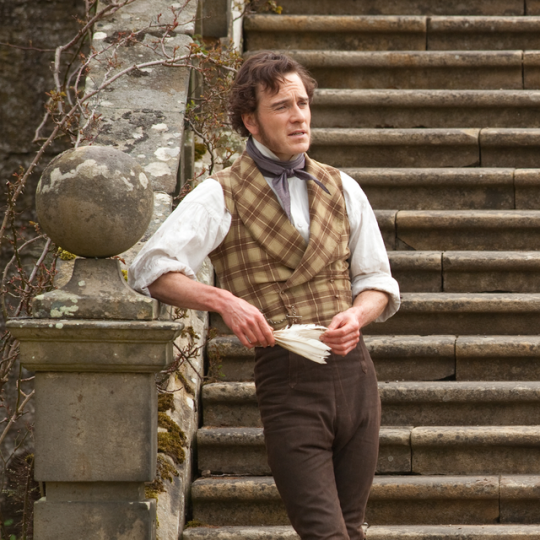
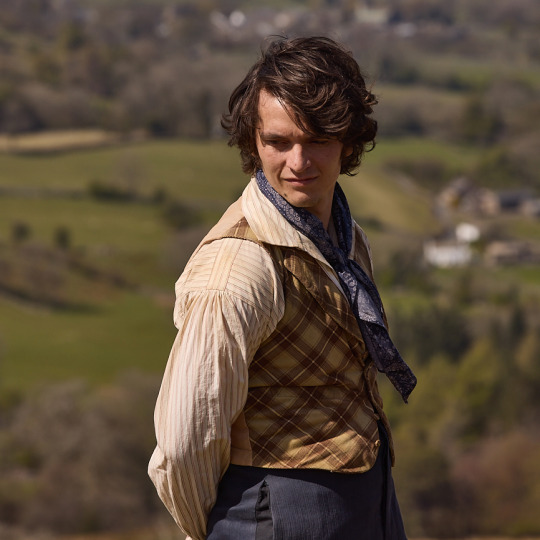
This curious beige and brown tartan waistcoat is quite a mystery. The first, worn by Michael Fassbender as Edward Rochester in the 2011 adaptation of Jane Eyre, is double-breasted. The second, which is worn differently and has pockets that the first does not, was worn by Fionn Whitehead as Branwell Brontë in the 2022 Emily, working as a post-literal Brontë figure alongside Fassbender’s literal Brontë character.
The fabric for the waistcoats is exactly the same, but the alignment of the stripes, is somewhat different, with one placed at an angle. The stripes evoke a double set of bars, possibly underlining how both characters, in their own unique ways feel trapped by their circumstances.
The fabric on the back of the waistcoats appears different as well, but this could be due to lighting. Both pieces were designed by Michael O’Connor, which is further evidence of the possibility of them being at the very least from the same production.
So what do you think? Were they both made for Jane Eyre and is one a duplicate that varies slightly? A piece that was unused? Or is this simply a case of O’Connor having the same material lying around and utilizing it for a waistcoat twice?
Love a waistcoat? Check out some of the other waistcoats we have documented on the site.
206 notes
·
View notes
Note
hiii! idk if i already requested this because I'm very forgetful but do you think you could do a tasm!peter fic with a bit of hurt/comfort? maybe r's just really burnt out and tired from school and studying and stress? thank u sm <3 i adore your work
No worries dude, you didn't! Thanks sm for requesting <33
tasm!Peter Parker x fem!reader ♡ 681 words
Peter sets your coffee down in front of you with a kiss to the top of your head. You raise it to your lips on autopilot, blowing gently.
“Thanks,” you murmur.
“No sweat.” His hand lingers on your shoulder. Instead of going back to his video game, he leans down to peer at your laptop screen. “Hey, this isn’t Jane Austen.”
“No,” you confirm. Ordinarily, this is where you’d think up something witty to say. Like you would know the difference, science geek or I didn’t know you knew how to read words that didn’t end in -ion. You find you don’t have the energy. “I turned in the Austen essay earlier today. This one’s for my Flannery O’Connor class.”
“What?” Peter’s voice pitches upward excitedly. He tugs your shoulder so you’re facing him, crowding your eyeline. “Baby, that’s amazing! You’re done!”
“I’m not done,” you say, covering your disappointment with a shrug and a small smile. “I still have this essay due by the end of the week.”
“But you’re done with the Austen one!” Your boyfriend won’t allow his ebullience to be dampened, giving your shoulder a happy squeeze. “You worked on that for days, sweetheart, it must feel so great to have it turned in.”
You take another sip of your coffee, refocusing on the blinking cursor on your screen. Your eyes ache. “Yeah, I guess so.”
“Hey.” Peter’s hand cuts across your vision, turning your face back towards him. “You deserve to celebrate at least a little, don’t you think? How long do you have until this essay is due?”
“A couple days.”
“Sick.” His touch leaves your cheek, and you hear the click of your laptop shutting. “Take the night off.”
“Peter.” Your sigh is long and heavy. You swear you feel some essential part of you leave with it. “I can’t. I need to get this done.”
He works his hand between your back and the desk chair, encouraging you out of it. “You’ve got plenty of time to do it,” he reassures you, palm finding its favored spot on the small of your back to guide you towards the sofa. “I felt weird about giving you coffee at night anyways. We’ll switch it out for some tea, get cozy on the couch, just take it easy for the night. You could use a break.”
You really could, but you’re not sure you can afford one. You cast a glance back toward your laptop, abandoned and beckoning with a cold imperativeness from your desk. “Let me just get this paragraph down…”
But Peter is determined, setting one hand on each of your shoulders to push you down onto the cushions. “It’ll still be there tomorrow,” he says, sitting next to you and settling you against his side before you can try to get up. He tilts his head as he meets your gaze, brown eyes sharp and more discerning than you think you’re comfortable with. “Look, I wasn’t gonna pull this card, but you’re not acting like yourself. This whole quiet and ghostlike thing is freaking me out.”
He turns up a corner of his mouth to let you know he’s at least partly joking. You crack a smile in return. Peter pecks your cheek and goes on, encouraged.
“Just give me tonight, sweetheart. If you wanna go back to Flannery at nine tomorrow morning, I won’t stop you, but give yourself at least a few hours off.”
You shouldn’t be surprised he’d remembered which class your essay was for, but you are. You suspect that if you looked hard enough, you’d eventually find an encyclopedia your boyfriend has filled with tiny things to remember about you. It’s the only explanation.
You really are tired.
“Okay,” you say, and he actually fist-pumps, your favorite dork. “Just let me make the tea, okay? You never steep it long enough.”
Peter rolls his eyes, smiling as he kisses the skin next to your eye. “Such a perfectionist,” he says fondly. “How about I make us hot chocolate instead, and then you won’t have to worry about it?”
#tasm!peter parker#tasm!peter#tasm!peter parker x reader#tasm!peter parker x you#tasm!peter parker x fem!reader#tasm!peter x reader#tasm!peter parker x y/n#tasm!peter parker x self insert#tasm!peter x you#tasm!peter parker fanfiction#tasm!peter parker fanfic#tasm!peter parker fic#tasm!peter parker fluff#tasm!peter parker hurt/comfort#tasm!peter parker imagine#tasm!peter imagine#tasm!peter parker drabble#tasm!peter parker scenario#tasm!peter parker blurb#tasm!peter parker oneshot#tasm!peter parker one shot#tasm peter parker#the amazing spiderman
230 notes
·
View notes
Note
do you have any gothic lit recs?
oh plenty! since this isn’t specific i’m just gonna list some of my faves!
wuthering heights, emily brontë
jane eyre, charlotte brontë
mathilda, mary shelley
the bloody chamber, angela carter
rebecca, daphne du maurier
we have always lived in the castle, shirley jackson
the yellow wallpaper, charlotte perkins gilman
carmilla, sheridan le fanu
frankenstein, mary shelley
the haunting of hill house, shelley jackson
the mill on the floss, george eliot
the double, fyodor dostoyevsky
my cousin rachel, daphne du maurier
the grey woman, elizabeth gaskell
the fall of the house of usher, edgar allan poe
beloved, toni morrison
valerie and her week of wonders, vítězslav nezval
wise blood, flannery o’connor
wide sargasso sea, jean rhys
dracula, bram stoker
salome, oscar wilde
white is for witching, helen oyeyemi
deathless, catherynne m. valente
piranesi, susanna clarke
picnic at hanging rock, joan lindsay
the orphan’s tales, catherynne m. valente
295 notes
·
View notes
Text
Why You Should Read Mansfield Park
Mansfield Park is consistently voted the least favourite Jane Austen novel, much to my despair. A lot of people don't even read it based on that reputation. If you are an Austen fan, or even just a book fan, this is why you should read it.
Mansfield Park: Something for Everyone
Are you an extrovert who wants to understand the other side, have you ever experienced: “pausing a moment for what she knew would not come, for a courage which the outside of no door had ever supplied to her“? Try Mansfield Park and live inside the head of an introvert!
Are you tired of everyone loving the highly extroverted and witty Elizabeth Bennet, Fanny Price is your heroine! Watch her go from unappreciated and ignored to, “the daughter that he wanted,” by being quietly helpful, moral, and kind, not bright and sparkling.
Do you enjoy watching university-aged people creating drama, being selfish, and having elaborate love triangles? TV ratings seem to indicate yes. Look no further than Mansfield Park! Sisters who love the same guy, unrequited love, hidden jealousy, and can the bad boy finally go good?
Not into drama? How about intelligent critiques of the Church of England, a good deal of it still relevant today? Mary Crawford has you covered!
Into Poetry? Fanny Price thinks in poetry! Check out her monologue on “tyrannic memory” or her reflections on sunlight when she’s staying with her family in Portsmouth. Mary Crawford didn’t pay attention, but you will love it!
Do you love free stuff? Who doesn’t love free stuff? Watch the master of mooching, Mrs. Norris, abscond with all the extra jellies after the ball and sponge a heath, some eggs, AND a cream cheese from Southerton. Have you ever made someone feel better by stealing green baize?
Want romance? Only read Ch 30 and forget everything else that happens!
Mansfield Park, give it a first chance, or another chance.
(Also, neither movie (1999 or 2007) follows the book. The 1983 mini is the only one true to canon. If you’ve watched Fances O’Connor as Fanny Price you don’t know the real story. And these aren't small quibbles, they completely changed Fanny's character in 1999, it's the forerunner of Persuasion 2022)
#Mansfield park#fanny price#austen ads#jane austen#please read mansfield park#I mean if you want to#I won't be too pushy#but it's great and I love it#every time someone posts: I just started Mansfield and why is everyone shit to Fanny i am so happy inside#we have gained another I say to myself#I may love MP the best because it's the most in need of love#much like Fanny Price herself#does that make me a hipster?
149 notes
·
View notes
Text
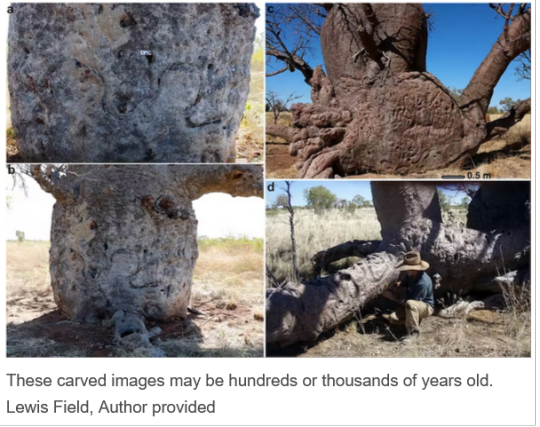

Australia’s Tanami desert is one of the most isolated and arid places on Earth. It’s a hard place to access [...].
But sprinkled across this vast expanse of desert, sweeping for thousands of kilometres across the Northern Territory and Western Australia, are some of the oldest and most incredible stories of human life [...].
It takes the shape of art in the bark of iconic and bountiful boab trees.
Our newly published research looks at 12 examples of these carved trees across the Tanami desert. This artwork tells the incredible story of the Indigenous Traditional Owners who have long called the Tanami home.
Sadly, after lasting centuries if not millennia, this incredible artwork is now in danger of being lost.
We are in a race against time to document and preserve this invaluable art.
---
The Australian boab or bottle tree (Adansonia gregorii) is an iconic tree naturally found only in a restricted area of northwestern Australia.
Boabs are an important economic species for First Nations Australians. The pith, seeds and young roots are all eaten, and the inner bark of the roots used to make string. First Nations Australians also used parts of the boab for medicine.
While the culinary and health attributes of boabs are well known, less well known is that many of these trees are culturally significant, carved with images and symbols hundreds, and perhaps even thousands, of years ago. Australian boabs have never been successfully dated. They are often said to live for more than a thousand years, but this is based on the ages obtained from baobab trees in South Africa.
Some hint of the great age of the boabs can be gleaned from the heritage-listed “Mermaid tree” on the Kimberley coast at Careening Bay. “HMC Mermaid 1820” was carved into the tree during Phillip Parker King’s second voyage.
At the time of carving, the girth of the Mermaid tree was measured at 8.8 metres. Today, more than 200 years on, the inscription is still clear and the trunk circumference has increased to about 12 metres.
Now, modern pastoral land clearance and bushfires are having a toll on the oldest of the boabs. There is some urgency to record this cultural and artistic archive before the ancient trees die. [...]
---
Despite this early [settler] interest, little more was documented about carved boab trees until Ian Crawford wrote The Art of the Wandjina in 1968. [...] Almost 20 years later, historian Darrell Lewis stumbled across the Tanami Indigenous carved boabs while searching for a boab tree engraved with the letter “L” marked by the explorer Ludwig Leichhardt [...].
In July last year [2021], academics and Traditional Owners began to record the boab trees with carvings in the remote northern Tanami Desert. [...]
Most of the carved boabs recorded on the Tanami trip feature snakes. Indigenous oral tradition describes a major Dreaming track, King Brown Snake Dreaming (Lingka), which begins near Broome and travels east across the Kimberley region of WA before passing into the Northern Territory. Our survey area was located along this track. [...]
These remarkable Australian trees help tell the story of First Nations Australians [...].

---
Headline, images, captions, and text published by: Sue O’Connor, Brenda Garstone, and Jane Balme. “The boab trees of the remote Tanami desert are carved with centuries of Indigenous history - and they’re under threat.” The Conversation. 11 October 2022.
185 notes
·
View notes
Photo

Hey guys, it’s time to share my favourite film watches of 2022! I can’t say that I saw every film that was on my watchlist but I think there were some definite highlights.
In ‘new releases’ we have this Top 20 (very loosely ranked!):
1. Aftersun (dir. Charlotte Wells)
2. Tár (dir. Todd Field)
3. The Woman King (dir. Gina Prince-Bythewood)
4. The Wonder (dir. Sebastian Lelio)
5. À Plein Temps (dir. Eric Gravel)
6. Mrs Harris Goes To Paris (dir. Anthony Fabian)
7. Good Luck To You, Leo Grande (dir. Sophie Hyde)
8. Les Passagers De La Nuit (dir. Mikhaël Hers)
9. The Quiet Girl (dir. Colm Bairéad)
10. L’Événement (dir. Audrey Diwan)
11. The Fabelmans (dir. Steven Spielberg)
12. Fire Of Love (dir. Sara Dosa)
13. Les Années Super 8 (dir. Annie Ernaux & David Ernaux-Briot)
14. Les Olympiades (dir. Jacques Audiard)
15. Nobody Has To Know (dir. Bouli Lanners)
16. Ali & Ava (dir. Clio Barnard)
17. Top Gun: Maverick (dir. Joseph Kosinski)
18. Dowton Abbey: A New Era (dir. Simon Curtis)
19. Emily (dir. Frances O’Connor)
20. Rien À Foutre (dir. Julie Lecoustre & Emmanuel Marre)
And in ‘older releases’…
1. The Worst Person In The World (2021, dir. Joachim Trier)
2. Amanda (2018, dir. Mikhaël Hers)
3. Ce Sentiment De L’Été (2015, dir. Mikhaël Hers)
4. The Broken Circle Breakdown (2012 , dir. Felix Van Groeningen)
5. Bright Star (2009, dir. Jane Campion)
6. The Handmaiden (2016, dir. Park Chan-wook)
7. Daphne (2007, dir. Clare Beavan)
8. Oslo, August 31st (2011, dir. Joachim Trier)
9. Robin And Marian (1976, dir. Richard Lester)
10. La Belle Saison (2015, dir. Catherine Corsini)
As hard as it is to believe, 2023 is almost upon us, it's time to wish you all a HAPPY and SAFE New Year. Have a wonderful time wherever you are in the world.
Big love 💗💗
#share your list!#ranking list#top 2022#favourite films#aftersun#tár#the woman king#the wonder#à plein temps#mrs harris goes to paris#good luck to you leo grande#les passagers de la nuit#the quiet girl#l'événement#the fabelmans#fire of love#les années super 8#les olympiades#nobody has to know#ali and ava#top gun maverick#dowton abbey a new era#emily#rien à foutre#the worst person in the world#amanda#ce sentiment de l'été#the broken circle breakdown#bright star#the handmaiden
83 notes
·
View notes
Text
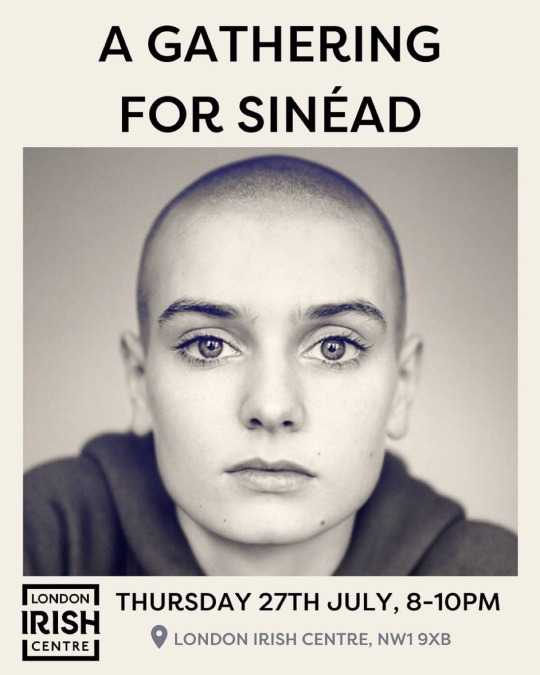
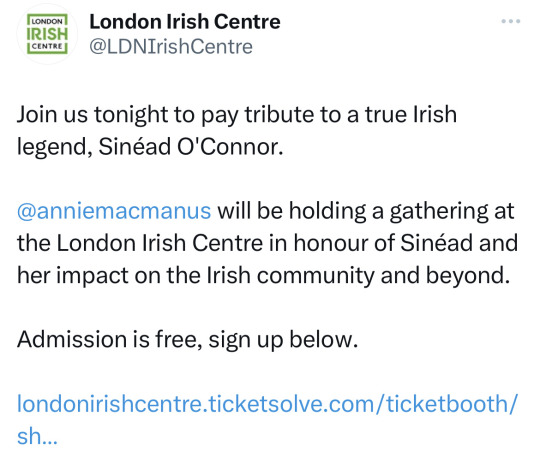
Twitter
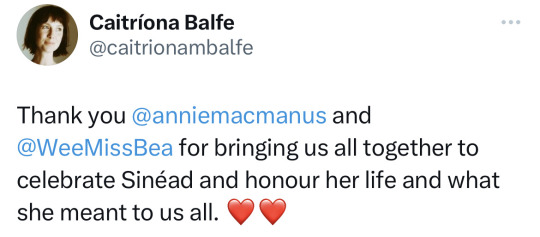
Twitter
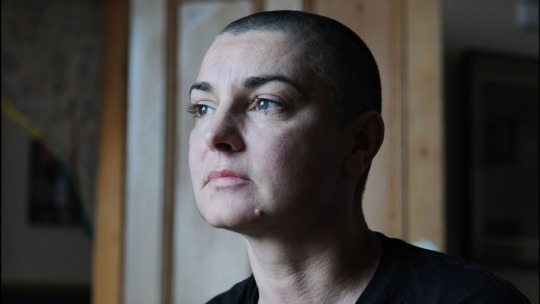
Sinead O'Connor at her home in County Wicklow, Republic of Ireland in 2012. David Corio/Redferns/Getty Images
Caitríona Balfe, Michael Stipe and more pay tribute to Sinéad O’Connor
On Wednesday, as the news of Sinéad O’Connor’s death broke, many celebrities took to social media to pay tribute to the music icon.
As reported by Irish broadcaster RTE earlier in the day, O’Connor’s death was confirmed by a family statement. No cause of death was immediately available.
“I hope you are at peace,” actor Caitríona Balfe wrote on her Instagram page, adding “and with your baby boy. Thank you for sharing your soul with us and soothing us with your incredible voice beautiful Sinéad.”
O’Connor contributed her vocals to the opening credits of Season 7 of acclaimed series “Outlander,” in which Balfe stars. The actor’s mention of O’Connor’s “baby boy” was in reference to the singer’s son Shane, who died by suicide at age 17 in 2022.
Michael Stipe, famed REM singer-songwriter, simply wrote on Instagram aongside a photo of him with O’Connor that “there are no words.” Stipe has spoken about how much he was influenced by O’Connor, telling the Washington Post in a 2020 interview that “so many people have lifted from her, from me to Miley Cyrus. She’s one of our great, living icons.”
Belinda Carlisle, lead vocalist of the all-girls 80s rock band The Go-Gos, wrote “may she find peace now. Forever loved,” on her Twitter page on Wednesday, while singer-songwriter Melissa Etheridge wrote on her page that news of O’Connor’s death “is such a tragedy.”
“What a loss. She was haunted all her life. What a talent,” Etheridge continued. “I remember my first Grammy show meeting this small shy Irish girl.”
The Cranberries – who lost their lead singer, the Irishwoman Dolores O’Riordan, in 2018 – shared a tribute on their official Instagram account, writing that they “are shocked and saddened to hear of Sinead’s sudden passing. We have all been big fans for many years. Our thoughts are with her family.”
Shirley Manson, lead singer of Garbage, posted in honor of O’Connor to the band’s Instagram page, writing, “I’m heartbroken.”
“This disgusting world broke her and kept on breaking her. Godspeed dear fragile dove,” the post continued. “Thank you for all the beauty and all the wise teachings you offered up to us. I wish you nothing but peace and I will love you for all of time.”
O’Connor’s contemporary Annie Lennox shared a poem in the late singer’s memory on her Instagram, beginning it with, “You bared your soul… | Shared your brilliance | Through exquisite artistry”.
Oscar-winner Jamie Lee Curtis penned a lengthy tribute to O’Connor on her Instagram page, saying, “I once heard Sìnead (sic) sing acapella in an empty chapel in Ireland. It was under construction at the private home of our host. It was one of the most beautiful things I’ve ever heard in my life.”
“I loved her. Her music. Her life,” Curtis added, going on to reminisce about the time she spent with O’Connor at a music festival.
“Sixth Sense” actor Toni Collette also shared a personal memory with O’Connor, writing on Instagram, “I was lucky enough to hang out with her a few times in my twenties. On one occasion we all sang in the hills of Wicklow in Eire. I sang a Jane Siberry song and Sinead then asked/encouraged me to sing one of my own. Can you imagine the terror? The intimidation? The thrill?!”
“She was so talented, so generous, humble, resilient, courageous and true,” Collette continued. “What a voice. What a force. My heart breaks.”
Beyond those in the arts, O’Connor’s impact was felt in her home country of Ireland.
“What Ireland has lost at such a relatively young age is one of our greatest and most gifted composers, songwriters and performers of recent decades, one who had a unique talent and extraordinary connection with her audience, all of whom held such love and warmth for her,” Irish president Michael D. Higgins said in a statement sent to CNN.
“May her spirit find the peace she sought in so many different ways,” his statement concluded.
CNN
Remember… you bared your soul… shared your brilliance through exquisite artistry. — Annie Lennox
#Tait rhymes with hat#Good times#Sinéad O’Connor#A Gathering For Sinéad#London Irish Centre#27 July 2023#London#CNN#26 July 2023#Twitter
26 notes
·
View notes
Text
The Best Books
The list is made from an academic point of view. More books may be added or any book may be taken out of the list at anytime.
Books that enlightened, outraged, provoked and comforted us
Pride and Prejudice by Jane Austen, 1813
Emma by Jane Austen, 1815
The Count of Monte Cristo by Alexandre Dumas, 1844
Wuthering Heights by Emily Bronte, 1847
Vanity Fair by William Makepeace Thackeray, 1848
Great Expectations by Charles Dickens, 1860
Les Miserables by Victor Hugo, 1862
Crime and Punishment by Fyodor Dostoyevsky, 1866
Little Women by Louisa May Alcott, 1868
Middlemarch: A Study of Provincial Life by George Eliot, 1874
Anna Karenina by Leo Tolstoy, 1877
Adventures of Huckleberry Finn by Mark Twain, 1884
Germinal by Émile Zola, 1885
The Short Stories of Anton Chekhov by Anton Chekhov, 1888
The Ambassadors by Henry James, 1903
In Search of Lost Time by Marcel Proust, 1913
Dubliners by James Joyce, 1914
The Mysterious Stranger by Mark Twain, 1916
Ulysses by James Joyce, 1922
The Magic Mountain by Thomas Mann, 1924
An American Tragedy by Theodore Dreiser, 1925
The Great Gatsby by F. Scott Fitzgerald, 1925
To the Lighthouse by Virginia Woolf, 1927
Coming of Age in Samoa by Margaret Mead, 1928
All Quiet on the Western Front by Erich Remarque, 1929
The Sound and the Fury by William Faulkner, 1929
The Autobiography of Alice B. Toklas by Gertrude Stein, 1933
Tender is the Night by F. Scott Fitzgerald, 1934
Gone With the Wind by Margaret Mitchell, 1936
Death on the Nile by Agatha Christie, 1937
Out of Africa by Isak Dinesen, 1937
Their Eyes Were Watching God by Zora Neale Hurston, 1937
The Grapes of Wrath by John Steinbeck, 1939
Romola by George Eliot, 1940
Black Boy by Richard Wright, 1945
Hiroshima by John Hersey, 1946
Robinson Crusoe by Daniel Defoe, 1946
A Streetcar Named Desire by Tennessee Williams, 1947
Under the Volcano by Malcolm Lowry, 1947
The Sheltering Sky by Paul Bowles, 1949
The Catcher in the Rye by J. D. Salinger, 1951
Invisible Man by Ralph Ellison, 1952
Lord of the Flies by William Golding, 1954
The Sun Also Rises by Ernest Hemingway, 1954
Lolita by Vladimir Nabokov, 1955
Notes of a Native Son by James Baldwin, 1955
Our Man in Havana by Graham Greene, 1958
The Civil War by Shelby Foote, 1958
Raise High the Roof Beam, Carpenters and Seymour: An Introduction by JD Salinger, 1959
Rabbit, Run by John Updike, 1960
Where Angels Fear to Tread by E. M. Forster, 1960
The Death and Life of Great American Cities by Jane Jacobs, 1961
The Making of the President by Theodore H. White, 1961
Pale Fire by Vladimir Nabokov, 1962
The Spy Who Came in from the Cold by John le Carre, 1963
A Moveable Feast by Ernest Hemingway, 1964
The Autobiography of Malcolm X by Malcolm X, 1965
Manchild in the Promised Land by Claude Brown, 1965
Against Interpretation, and Other Essays by Susan Sontag, 1966
In Cold Blood by Truman Capote, 1966
One Hundred Years of Solitude by Gabriel Garcia Marquez, 1967
The American Cinema by Andrew Sarris, 1968
The Double Helix by James Watson, 1968
The Electric Kool_Aid Acid Test by Tom Wolfe, 1968
I Know Why the Caged Bird Sings by Maya Angelou, 1969
Slaughterhouse-Five by Kurt Vonnegut, 1969
The French Lieutenant’s Woman by John Fowles, 1969
Are You There God? It’s Me Margaret by Judy Blume, 1970
Ball Four by Jim Boutton, 1970
The Complete Stories of Flannery O’Connor, 1971
The Best and the Brightest by David Halberstam, 1972
The Politics of Nonviolent Action by Gene Sharp, 1973
All The President’s Men by Bob Woodwad and Carl Bernstein, 1974
The Power Broker by Robert A. Caro, 1974
Ragtime by E. L. Doctorow, 1975
Sociobiology by Edward O. Wilson, 1975
The Executioner’s Song by Norman Mailer, 1979
The Clan of the Cave Bear by Jean M. Auel, 1980
Follow The River by James Alexander Thom, 1981
Psychoanalysis: The Impossible Profession by Janet Malcolm, 1981
The Fractal Geometry of Nature by Benoit Mandelbrot, 1982
The Last Lion: Winston Spencer Churchill by William Manchester, 1983
The Unbearable Lightness of Being by Milan Kundera, 1984
The Center of the Cyclone by John Lilly, 1985
Great and Desperate Cures by Elliott Valenstein, 1986
Maus by Art Spiegelman, 1986
The Making of the Atomic Bomb by Richard Rhodes, 1986
And the Band Played On by Randy Shilts, 1987
Beloved by Toni Morrison, 1987
The Closing of the American Mind by Allan Bloom, 1987
A Brief History of Time by Stephen Hawking, 1988
Battle Cry of Freedom: The Civil War Era by James M. McPerson, 1988
The Society of Mind by Marvin Minsky, 1988
Summer’s Lease by John Mortimer, 1989
A Prayer For Owen Meany by John Irving, 1989
A Soldier of the Great War by Mark Helprin, 1991
Mortal Questions by Thomas Nagel, 1991
PIHKAL by Alexander and Ann Shulgin, 1991
Lonely Hearts of the Cosmos by Dennis Overbye, 1991
The Six Wives of Henry VIII by Alison Weir, 1991
Band of Brothers by Stephen E. Ambrose, 1992
The Talented Mr Ripley by Patricia Highsmith, 1992
The English Patient by Michael Ondaatje, 1993
Dreams from My Father by Barack Obama, 1995
Montana Sky by Nora Roberts, 1996
Tuesdays with Morrie: An Old Man, a Young Man, and Life’s Greatest Lesson by Mitch Albom, 1997
War Before Civilization by Lawrence Keeley, 1997
How the Mind Works by Steven Pinker, 1997
A Walk in the Woods by Bill Bryson, 1998
In the Name of Eugenics by Daniel Kevles, 1998
Who Moved My Cheese? by Spencer Johnson, 1998
Interpreter of Maladies by Jhumpa Lahiri, 1999
A Heartbreaking Work of Staggering Genius by Dave Eggers, 2000
Nonzero by Robert Wright, 2000
Chocolat by Joanne Harris, 2000
The Secret Life of Bees by Sue Monk Kidd, 2001
The Illusion of Conscious Will by Daniel Wegner, 2002
Atonement by Ian McEwan, 2003
The Kite Runner by Khaled Hosseini, 2003
The Known World by Edward P. Jones, 2003
Gilead by Marilynne Robinson, 2004
My Sister’s Keeper by Jodi Picoult, 2004
Portofino: A Novel (Calvin Becker Trilogy) by Frank Schaeffer, 2004
Never Let Me Go by Kazuo Ishiguro, 2005
The Book Thief by Marcus Zusak, 2005
The Girl With a Dragon Tattoo by Stieg Larsson, 2008
Lords of Finance: The Bankers Who Broke The World, 2009
Unbroken: A World War II Story of Survival, Resilience and Redemption by Laura Hillenbrand, 2010
Washington: A Life by Ron Chernow, 2010
Orientation: And Other Stories by Daniel Orozco, 2011
Books that inspired debate, activism, dissent, war and revolution
The Torah
Bhagavad Gita
I Ching (Classic of Changes) by Fu Xi
Tao Te Ching by Lao Tzu
The Summa Theologica of St. Thomas Aquinas, 1266
The Divine Comedy by Dante Alighieri, 1321
Don Quixote by Miguel de Cervantes, 1605
Ethics by Baruch de Spinoza, 1677
Pilgrim’s Progress by John Bunyan, 1678
Candide by Voltaire, 1759
Confessions by Jean-Jacques Rousseau, 1781
Critique of Pure Reason by Immanuel Kant, 1781
Democracy in America by Alexis de Tocqueville, 1835
A Christmas Carol by Charles Dickens, 1843
Moby-Dick by Herman Melville, 1851
Uncle Tom’s Cabin by Harriet Beecher Stowe, 1852
Walden (Life in the Woods) by Henry David Thoreau, 1854
Madame Bovary by Gustave Flaubert, 1857
Experiments on Plant Hybridization by Gregor Mendel, 1866
War and Peace by Leo Tolstoy, 1869
Thus Spoke Zarathustra by Friedrich Nietzsche, 1883
Arabian Nights by Andrew Lang, 1898
The Ragged Trousered Philanthropists by Robert Tressell, 1914
Relativity: The Special and General Theory by Albert Einstein, 1916
Psychological Types by Carl Jung, 1921
Mein Kampf (My Struggle or My Battle) by Adolf Hitler, 1925
Der Process (The Trial) by Franz Kafka, 1925
The Tibetan Book of the Dead by Karma-glin-pa (Karma Lingpa), 1927
Brave New World by Aldous Huxley, 1932
The General Theory of Employment Interest and Money by John Maynard Keynes, 1936
The Big Book by Alcoholics Anonymous, 1939
Being and Nothingness by Jean-Paul Sartre, 1943
The Little Prince by Antoine de Saint-Exupery, 1943
The Road To Serfdom by Friedrich von Hayek, 1944
Animal Farm by George Orwell, 1945
Survival in Auschwitz: The Nazi Assault on Humanity by Primo Levi, 1947
The Diary of a Young Girl by Anne Frank, 1947
Nineteen Eighty-Four by George Orwell, 1949
The Second Sex by Simone de Beauvoir, 1949
The Origins of Totalitarianism by Hannah Arendt, 1951
Things Fall Apart by Chinua Achebe, 1958
To Kill a Mockingbird by Harper Lee, 1960
Guerilla Warfare by Che Guevarra, 1961
Capitalism and Freedom by Milton Friedman, 1962
Silent Spring by Rachel Carson, 1962
The Structure of Scientific Revolutions by Thomas Kuhn, 1962
Quotations from Chairman Mao Tse-Tung (The Little Red Book) by Mao Zedong, 1964
Unsafe at Any Speed by Ralph Nader, 1965
Catch 22 by Joseph Heller, 1969
The Female Eunuch by Germaine Greer, 1970
Zen and the Art of Motorcycle Maintenance by Robert M. Pirsig, 1974
The Normal Heart by Larry Kramer, 1987
The Alchemist by Paulo Coelho, 1988
The Vagina Monologues by Eve Ensler, 1995
Harry Potter and the Philosopher’s Stone by J. K. Rowling, 1997
Books that shook civilization, changed the world
The Holy Bible
The Qur’an
The Analects of Confucius
The Iliad and The Odyssey by Homer
The Histories by Herodotus, 440 BC
The Republic by Plato, 380 BC
The Kama Sutra (Aphorisms on Love) by Vatsyayana
On the Shortness of Life by Lucius Annaeus Seneca (The Younger), 62
Geographia by Ptolemy, 150
Meditations by Marcus Aurelius, 160
Confessions by St. Augustine, 397
The Canon of Medicine by Avicenna, 1025
Magna Carta, 1215
The Inner Life by Thomas a Kempis, 1400’s
The Canterbury Tales by Geoffrey Chaucer, 1478
The Prince by Niccolo Machiavelli, 1532
On Friendship by Michel de Montaigne, 1571
The King James Bible by William Tyndale et al, 1611
The First Folio by William Shakespeare, 1623
Principia Mathematica by Isaac Newton, 1687
A Tale of a Tub by Jonathan Swift, 1704
Encyclopaedia or a Systematic Dictionary of the Sciences, Arts and Crafts, 1751
A Dictionary of the English Language by Samuel Johnson, 1755
Patent Specification for Arkwright’s Spinning Machine by Richard Arkwright, 1769
Common Sense by Thomas Paine, 1776
The History of the Decline and Fall of the Roman Empire by Edward Gibbon, 1776
The Wealth of Nations by Adam Smith, 1776
The Social Contract by Jean-Jacques Rousseau, 1762
On the Abolition of the Slave Trade by William Wilberforce, 1789
Rights of Man by Thomas Paine, 1791
A Vindication of the Rights of Woman by Mary Wollstonecraft, 1792
On the Pleasure of Hating by William Hazlitt, 1826
Experimental Researches in Electricity by Michael Faraday, 1839, 1844, 1855
The Communist Manifesto by Karl Marx and Friedrich Engels, 1848
On the Suffering of the World by Arthur Schopenhauer, 1851
Leaves of Grass by Walt Whitman, 1855
On Liberty by John Stewart Mill, 1859
On the Origin of Species by Charles Darwin, 1859
The Rules of Association Football by Ebenezer Cobb Morley, 1863
Das Kapital (Capital: Critique of Political Economy) by Karl Marx, 1867
On Art and Life by John Ruskin, 1886
The War of the Worlds by H. G. Wells, 1898
The Interpretation of Dreams by Sigmund Freud, 1899
The Jungle by Upton Sinclair, 1906
Why Am I So Wise by Friedrich Nietzsche, 1908
Married Love by Marie Stopes, 1918
Lady Chatterly’s Lover by D. H. Lawrence, 1928
A Room of One’s Own by Virginia Woolf, 1929
Civilization and its Discontents by Sigmund Freud, 1930
Why I Write by George Orwell, 1946
31 notes
·
View notes
Photo
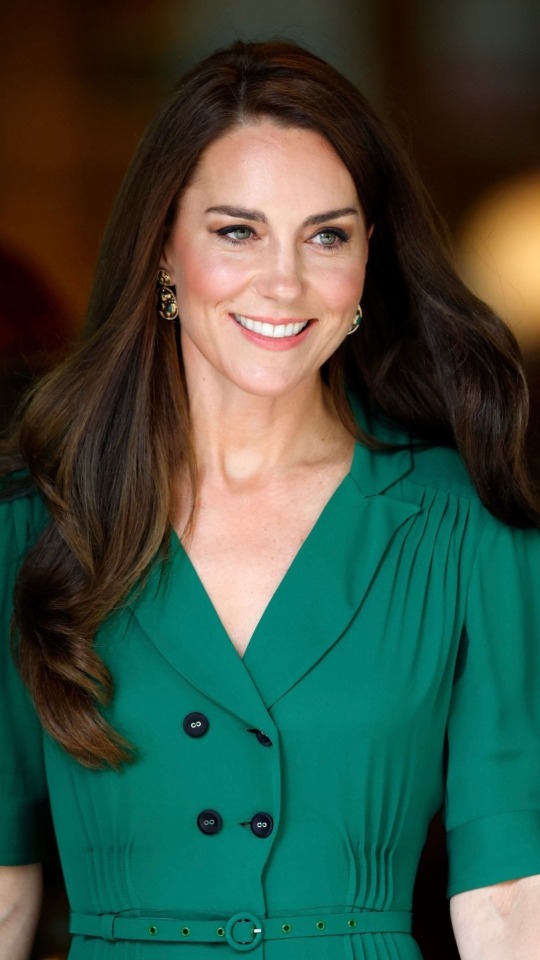

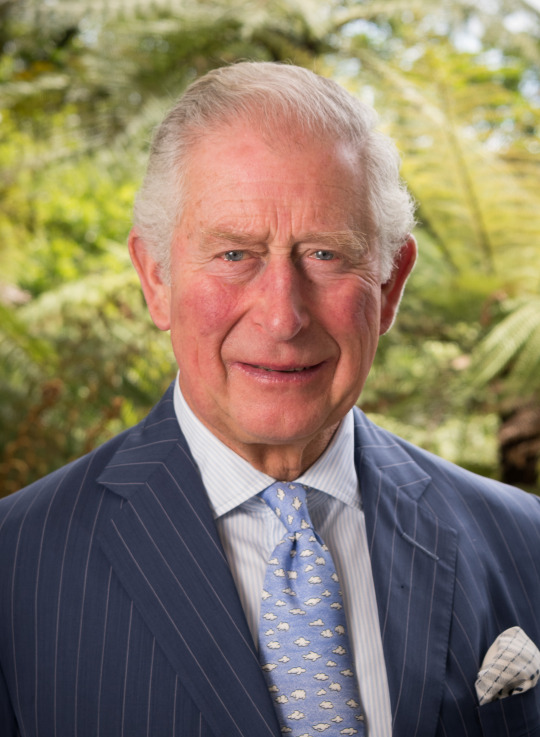
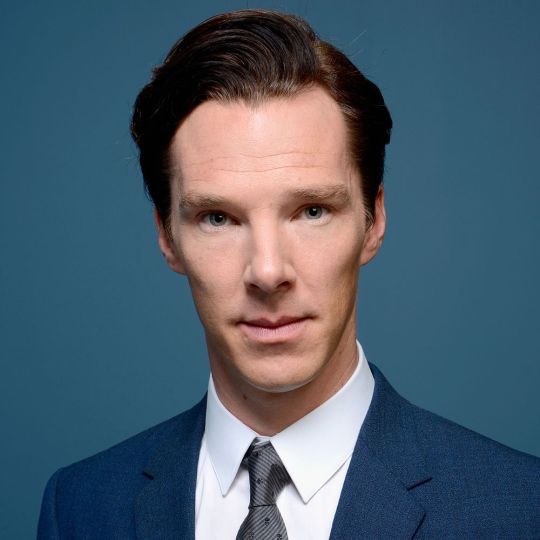
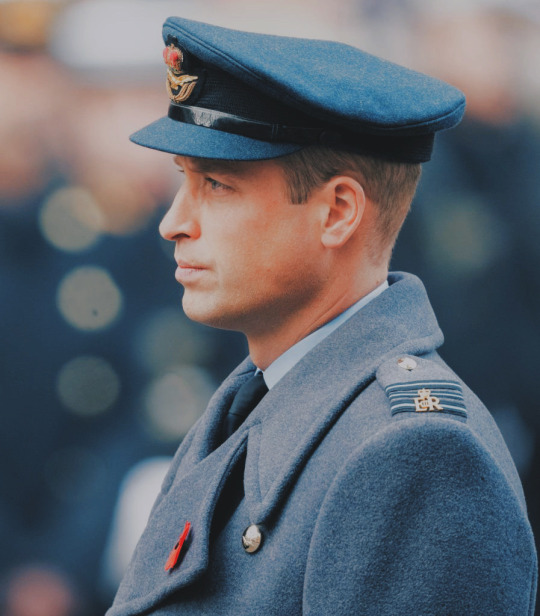
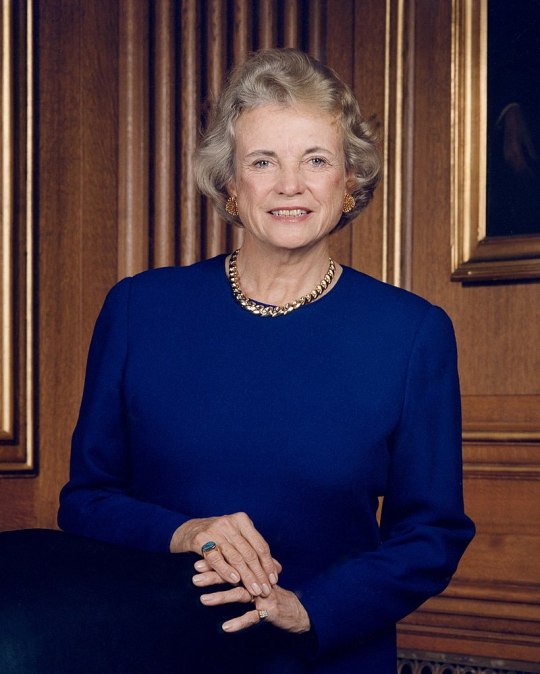
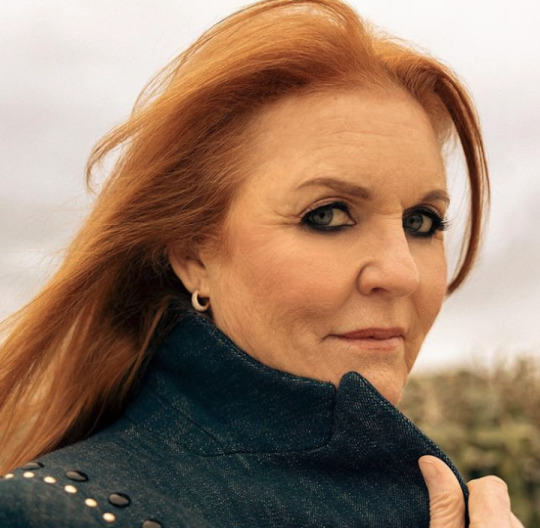
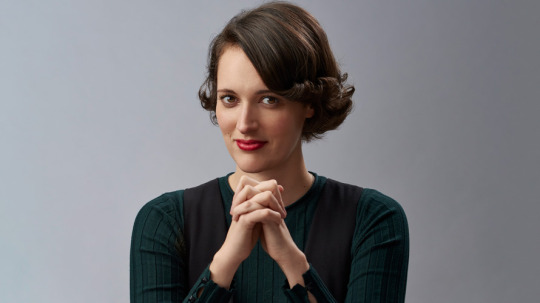
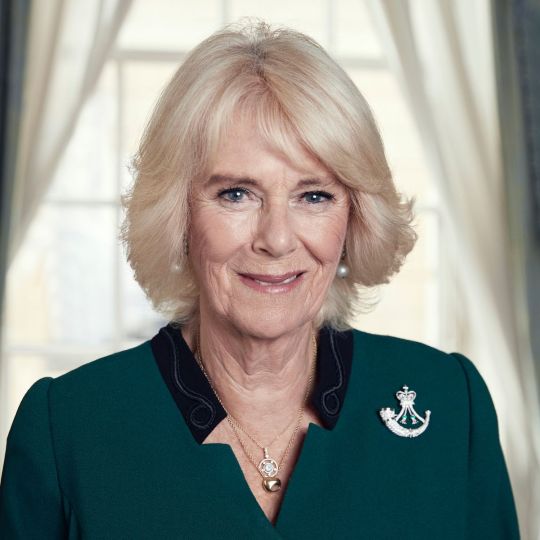
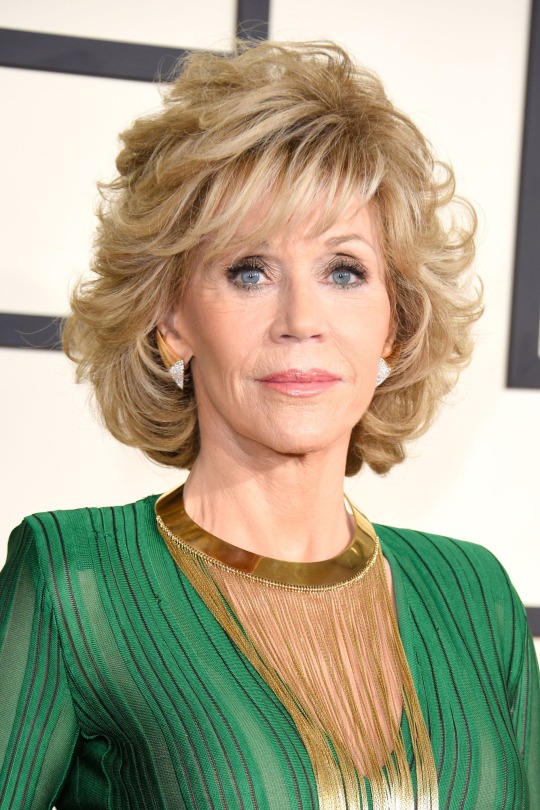
Famous People related to Catherine, The Princess of Wales.
Guy Ritchie - 6th cousin 1 time removed
King Charles III - 11th cousin 2 times removed
Benedict Cumberbatch - 11th cousin 2 times removed
Prince William - 12th cousin 1 time removed
Sandra Day O’Connor, First Female US Supreme Court Justice - 12th cousin 2 times removed
Sarah, Duchess of York - 13th cousin
Phoebe Waller-Bridge - 14th cousin
Queen Camilla - 14th cousin 2 times removed
Jane Fonda, 16th cousin 1 time removed
#princes catherine#brf#guy ritchie#king charles iii#benedict cumberbatch#prince william#sandra day o'connor#sarah ferguson#duchess of york#phoebe waller bridge#queen camilla#camilla parker bowles#jane fonda#also 17th cousin 1 removed from markle#british royal family#princess of wales#princess catherine#kate middleton#my post#KTD#my upload
24 notes
·
View notes
Text
Emily (2022), and when a dramatization is just bad

So, I watched this movie about Emily Bronte on Amazon Prime, called Emily (to its blandness). I was really looking forward to just watching a period piece ‘biopic’ about the Bronte sisters, because, despite their fame in the lit world, it’s weird that there’s so little about them in visual media.
From what I actually knew about the Bronte sisters prior to watching this (”a sister trio of writers, cool!”), what’s publicly available about them via documentaries and historians, I figure you’d have to try real, real hard to fuck up a dramatization about them.
And it’s to that end, I should’ve never underestimated director Frances O’Connor’s abilities, because, whew, lord, Emily was hot garbage on a sweltering day.
I really started thinking about how much the film (and novel) romance genre is informed by women’s particular brand of misogyny and sexism. You’ll see [white] women go on and on about sexism from men, especially in media. And not to discredit that, but, I’m honestly beginning to think it’s overcompensation.
No one throws women under the bus quite like other women.
Emily depicts the second best known Bronte sister as “so misunderstood” by her family, but especially by her sister Charlotte Bronte - who is depicted like the stuffy, uncool competitor of another man’s affections, with little to no interest in writing and imagination.
Anne Bronte is basically a background extra with little to no dialog who crumbles under the peer pressure of Charlotte who despises Emily’s need to turn every situation into an opportunity for storytelling.
Like, this film’s beef with Charlotte Bronte, and disinterest in Anne Bronte, is baffling. I come here for sister vibes, and instead I get Mean Girls. The fuck.

Emily Bronte is the embodiment of “not like the other girls”. She hangs with the boys, she smokes, drinks, she has a thinly veiled incestuous relationship with her brother, Branwell Bronte, and fucks generically hot priests (Oliver Jackson Cohen in maybe one the less inspired roles of his career).
Emily Bronte could not be any more of the 21st century white woman’s idea of the “cool girl who reads dark academia” if O’Connor taped the description on actress Emma Mackey’s head.
I can’t stress how much priority this film puts on male characters vs female characters as Emily Bronte’s choice of satellites. And as a justification for why she wrote Wuthering Heights, it’s boringly embarrassing.
Comparatively, Emily makes 2007′s Becoming Jane (starring Anne Hathaway as Jane Austen with a struggle accent) look like an Oscar winning drama (spoilers: I like that movie). Jane, at the very least, isn’t interested in the vilification or minimization of other female characters (that aren’t Professor McGonagall), even as it charts an equally fictionalized (or speculative) romance between Austen and James MacAvoy’s Thomas Lefroy (one that argues he was key in making her writing hit different).

While it’s clearly influenced by Joe Wright’s Pride and Prejudice (2005), Jane Austen’s relationships with her family, particularly her sister, matter in her story arc in the same way Elizabeth Bennett’s do in the aforementioned film. There’s sense of balance, however dramatized Austen’s story became for that film for the sake of a romance plot.
Comparatively, Emily depicts the Bronte family, sans her brother, as obstacles (if they aren’t nonevents) to her indulgences because they’re “oh, so ashamed of her proclivities”. Additionally, I just don’t care about Oliver Jackson-Cohen’s William Weightwright. Nigga is boring. I’d sooner believe Bly Manor’s Peter Quint (Jackson-Cohen, again) was a Healthcliff and homeboy was inspired by whole another ‘gothic lit’ author (Henry James).
For lack of a better word, I really hated this movie. There’s the argument that if you know next to nothing about the Bronte sisters that you might enjoy it. But even on that level, there’s a lot about the storytelling that is bland, and outright hateful imho.
Anyway, I hated everything (except maybe the score, which, as other have said, is overbearing for no rasin). It can die in a fire and be lost to the void of history.
#emily 2022#bronte sisters#emily bronte#amazon prime#women directors#white women directors#oliver jackson cohen#greatrunners meta
14 notes
·
View notes
Text
Whenever I read a book I like to cast the characters in my head as they are introduced. I wonder if everyone does this. I usually used actors or people I know well how they speak. Anyways I wanted to show you what my cast for the Alexandria Bellefleur series looks like.
Darcy- Katherine Barrel
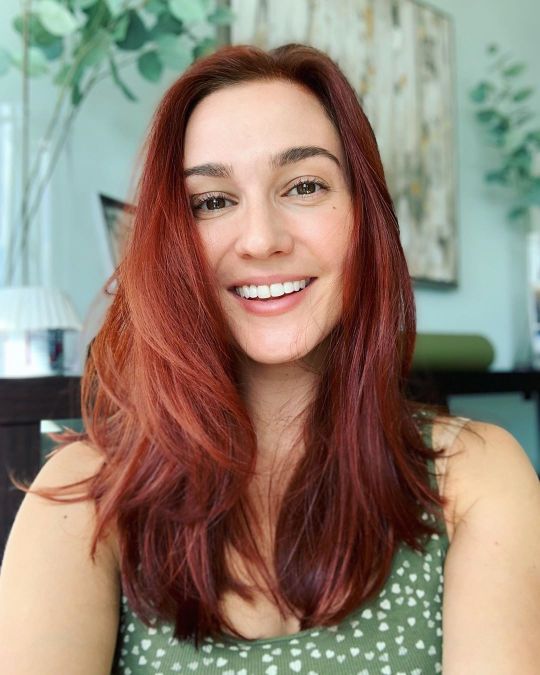
Elle- Elise Bauman

Brendon- Matt O’Connor
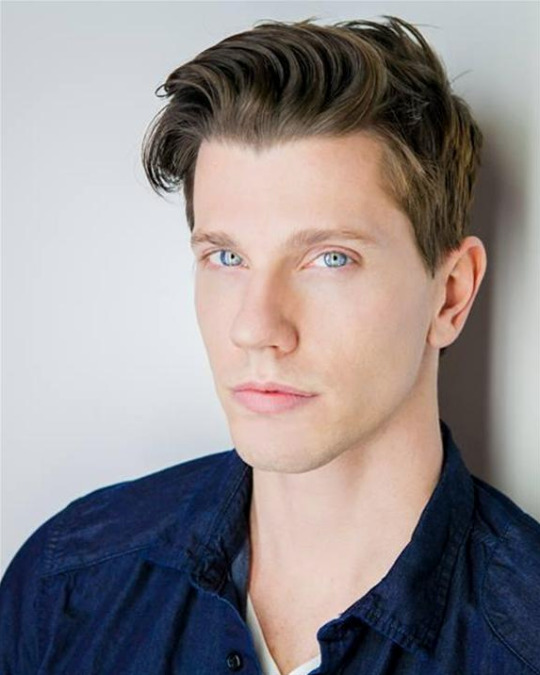
Annie- Annie Briggs

Brendon and Darcy’s mom-Jane Krakowski
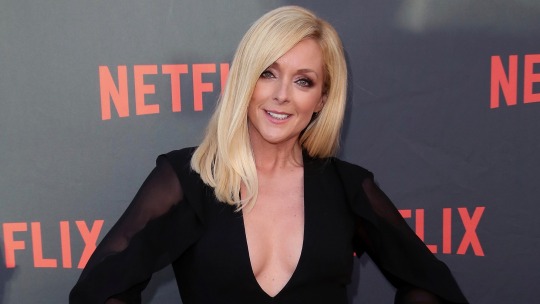
Margott- Sharon Belle
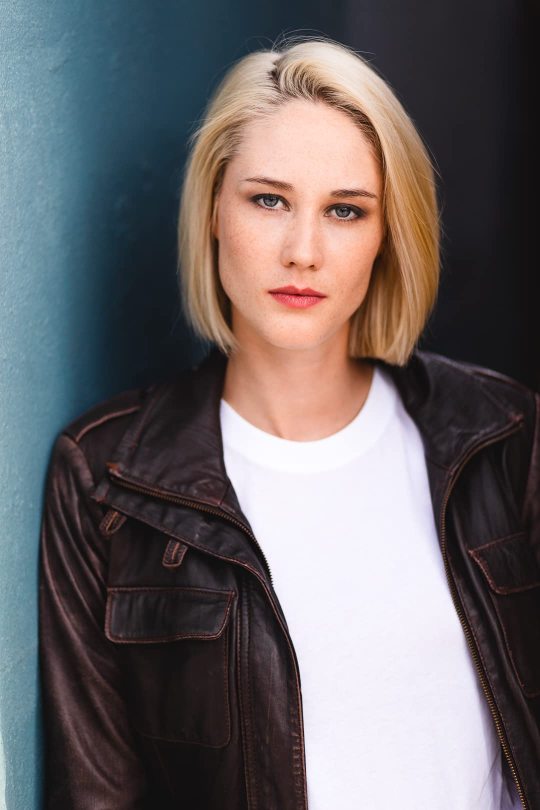
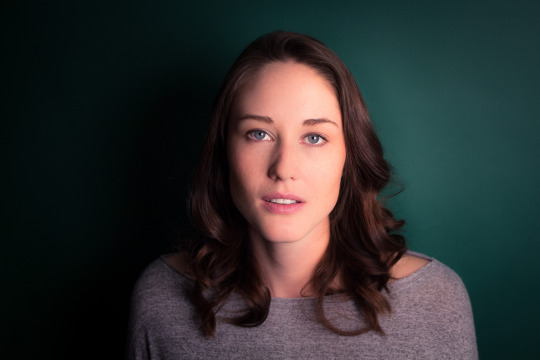
Olivia- Renee Rapp

#alexandria bellefleur#written in the stars#Hang the moon#count your lucky stars#lgbt books#yes I am aware the majority of them are from Carmilla don’t judge me XD
11 notes
·
View notes
Text














Interview with the Vampire by Anne Rice / A Series of Unfortunate Events (2004) dir. Brad Silberling / Mansfield Park by Jane Austen / Piranesi by Susanna Clarke / No Country for Old Men by Cormac McCarthy / Magnolia (1999) dir. Paul Thomas Anderson / No Country for Old Men / letterboxd review of Minority Report (2002) by Logan Kenny / Obi Wan Kenobi (2022) dir. Deborah Chow / All Star by Smash Mouth / Wise Blood by Flannery O’Connor / Mort by Terry Pratchett
41 notes
·
View notes
Text
What a glorious feeling
Script below the break
Hello and welcome back to The Rewatch Rewind! My name is Jane, and this is the podcast where I count down my top 40 most frequently rewatched movies in a 20-year period. Today I will be discussing number four on my list: MGM’s 1952 musical Singin’ in the Rain, directed by Stanley Donen and Gene Kelly, written by Betty Comden and Adolph Green, and starring Gene Kelly, Donald O’Connor, and Debbie Reynolds.
It's 1927 and silent film stars Don Lockwood (Gene Kelly) and Lina Lamont (Jean Hagen) have just premiered another smash hit. To escape from a mob of fans, Don jumps into the car of Kathy Seldon (Debbie Reynolds), who is surprisingly unimpressed by him, which he is both insulted and intrigued by. Weeks later, when Don is still focused on trying to find Kathy again, and his friend Cosmo Brown (Donald O’Connor) is running out of ways to get him to snap out of it, the success of Hollywood’s first talking picture prompts the studio head to turn the next Lockwood and Lamont film into a talkie, and Don’s life – and Hollywood itself – will never be the same.
This is a very important movie to me because in a way, it’s the one that started it all. My love for Old Hollywood began in a movie theater at a 50th anniversary screening of Singin’ in the Rain. I’ve mentioned in several previous episodes that I started getting into Old Hollywood in 2002 – this is why. My mom took me to see it, and then based on my reaction started introducing me to more of her faves from around this era, and here I am, 21 years later, still loving these films. I can’t remember exactly when I watched Singin’ in the Rain the second time; I might have seen it again in 2002, I don’t know. But I believe it was 2003 when we bought it on VHS while on a family road trip. We had a little TV/VCR that we used to set on top of a cooler behind the front seats, held in place with bungee cords. I could not get enough of this movie and insisted on watching it probably way more times than my siblings wanted on that road trip, although I think they enjoyed it too, just not quite to the extent that I did. I watched it seven times in 2003, six times in 2004, three times in 2005, once in 2006, once in 2007, twice in 2009, once in 2010, once in 2011, twice in 2012, once in 2013, twice in 2015, once in 2016, once in 2019, once in 2020, once in 2021, and twice in 2022. I can’t remember when, but at some point I ended up with a DVD in addition to the VHS. And one of my 2022 watches was in a theater for the 70th anniversary. While in many ways that was a very different experience from the first time I saw it, since every moment of the movie was deeply familiar rather than fresh and new to me, it felt no less magical. I still love this movie just as much as, if not more than, the first time I watched it, and I am so grateful that it introduced me to a world of films from generations before my time.
There is so much to love about this movie that I don’t even really know where to start. The dialogue is clever and delightful, the casting was perfect and the performances are brilliant, the costumes, sets, and lighting are gorgeous, and the music makes you feel like you’ll never be unhappy again. In some ways, it’s actually kind of similar to Mamma Mia, in that it’s a jukebox musical. Like how Mamma Mia took popular ABBA songs and loosely draped a story around them, Singin’ in the Rain took a bunch of old songs, mostly written by MGM producer Arthur Freed (who came up with the idea) and Nacio Herb Brown, and tied them together with a story. I will say I feel like the story of Singin’ in the Rain works quite a bit better, mainly because the subject matter fits the songs so well. It was a stroke of genius to make the movie that would feature songs from early talkies be about early talkies. Freed and Brown did write one new song specifically for this movie, “Make Em Laugh,” but it bears a remarkable resemblance to Cole Porter’s “Be a Clown” from the 1948 Freed-produced film The Pirate. Screenwriters Comden and Green wrote the “Moses Supposes” song based on an existing tongue-twister, but all of the other songs in the film had been featured in at least one previous movie. These days, Singin’ in the Rain is such a beloved, iconic movie that many of the songs’ origins are all but forgotten, and they’re generally associated with this picture. But it’s always kind of fun to be watching some random old movie that predates this one and hear one of these songs pop up. Probably my favorite instance of this is in Adam’s Rib, which was number 27 on this list and made in 1949, when Tom Ewell’s character is going to visit his mistress, played by Jean Hagen, he’s whistling “You Are My Lucky Star,” and I love that both that song and that actress ended up in this movie three years later.
A big part of what makes Singin’ in the Rain such a perfect introduction to Old Hollywood is that the songs are from Old Hollywood and the story is about Old Hollywood. It’s so fascinating to watch the characters figuring out the technical aspects of adding sound to a medium that modern audiences automatically associate with sound. But even beyond that, this movie breaks the illusion of Hollywood glamor while still sort of trying to hide behind that illusion, in a way that almost feels like it’s laughing at itself. So much of the story is about how movie magic relies on facades and deception. The movie starts with a red-carpet interview where Don tells of his rise to fame and his motto: “Dignity, always dignity,” while the audience sees flashbacks of his very undignified beginnings. Lina is on screen looking quietly glamorous for about 10 minutes before she finally speaks, revealing what the silence of her films has concealed: her voice is almost unbearably squeaky and obnoxious. So in order to make her presentable in a talking picture – which eventually becomes a musical – her voice is dubbed by Kathy. Initially the plan is to credit Kathy as Lina’s voice and use this to help launch her to stardom, but Lina threatens to sue the studio unless they force Kathy to be her voice indefinitely without credit. I don’t think it was usually quite that dramatic, but uncredited dubbing happened all the time. In previous episodes, I’ve mentioned Marni Nixon, who dubbed the singing for many iconic performances, such as Audrey Hepburn in My Fair Lady and Natalie Wood in West Side Story, without credit at the time, although now her contributions are kind of general knowledge, at least among movie buffs. But we don’t even have to go that far to find an example: it happened in Singin’ in the Rain itself! Betty Noyes, also known for singing “Baby Mine” in the Disney movie Dumbo, sang for Debbie Reynolds in a couple of her songs without credit, notably including “Would You?” which Kathy is meant to be dubbing for Lina. So Betty Noyes sang for Debbie Reynolds when she was singing for Jean Hagen. (Part of the time, anyway. The “Singin’ in the Rain” reprise that Kathy sings for Lina behind the curtain was definitely Debbie Reynolds’s voice.) Even more ironically, when Kathy is dubbing Lina’s dialogue (“Nothing can keep us apart, our love with last ‘til the stars turn cold”), that was Jean Hagen’s normal speaking voice, so Jean Hagen dubbed Debbie Reynolds dubbing Jean Hagen. I just can’t get over how blatantly these filmmakers went, “Hollywood is fake and yes that includes us” – although I suppose it was much less blatant at the time, I’m not sure at what point all of this became so well-known.
Learning about the dubbing didn’t decrease my love for this movie, although some of the other behind-the-scenes trivia kind of did – specifically the fact that nobody seemed to have a very good time working with Gene Kelly because he was so demanding and impatient, particularly with then 19-year-old Debbie Reynolds, who was not a very experienced dancer, which Kelly found exasperating, even though he knew about it when she got the role. Apparently at one point Fred Astaire – also a notoriously demanding perfectionist – found her crying under a piano at the studio and offered to help her with her dancing. She learned fast and committed hard, literally bursting blood vessels in her feet during the “Good Morning” number. Reynolds later famously said that Singin’ in the Rain and childbirth were the two hardest things she ever had to do. Not that she was the only one who worked hard. Gene Kelly was sick with a 103-degree fever when he performed one of the most famous scenes in Hollywood history, dancing and singing to the title song. I used to view this as admirable, but now I’m like, maybe they could have waited to film it until he got better? Similarly, Donald O’Connor, who was smoking four packs of cigarettes a day at the time, had to rest in the hospital for several days after filming the “Make ‘Em Laugh” scene, and again, it’s like, it’s an incredible performance in a great number, but was it really worth going to the hospital for? Both the story within this movie and the story of how it was made raise some very interesting questions about the “point” of motion pictures – as art, as entertainment, and as an industry – that are still being wrestled with today. Personally, I don’t believe anyone should be forced to risk their health for their job, but at the same time I appreciate how dedicated everyone involved was to making this masterpiece the best it could possibly be. It certainly paid off in this instance. It’s easy for me to say now that it would have been worth making a slightly worse movie if that meant protecting the well-being of the actors, but maybe if it was worse I wouldn’t have quite fallen in love with it to this degree and my life would look very different. So I still don’t know how to feel about all this. And I don’t even know how much it matters anymore, given that the only major cast member still alive is Rita Moreno, whom I absolutely would not have recognized without seeing her name in the credits, and I don’t think she personally was injured on this set – although she was originally supposed to sing “I’ve Got a Feelin’ You’re Foolin’” which then got absorbed into the “Beautiful Girl Montage” that she wasn’t part of, which is a major bummer because she deserved a bigger role in this.
Anyway, speaking of complicated feelings, let’s talk about the romantic aspects of Singin’ in the Rain. The romance between Don and Kathy is an important part of the story, and while that’s a little disturbing knowing how terribly Kelly treated Reynolds on set, and that he was approximately twice her age, their characters’ relationship within the movie is mostly very sweet and I don’t really have a problem with it. And I appreciate how much screentime is devoted to the friendship between Don and Cosmo, which Don is shown continuing to value just as much as he always did even after he starts seeing Kathy. It’s always great to see characters refusing to follow the amatonormative idea of a relationship hierarchy, with every other relationship falling far below one’s romantic partnership. I love the scene in Don’s house that leads to the “Good Morning” number partly because it’s an important turning point in the story and it’s a great song, but also because it shows Don and Kathy and Cosmo as a trio, not a couple with a third wheel, which is so lovely to see. But though Don does his best to resist amatonormativity, it still pursues him rather relentlessly in the form of his costar, Lina Lamont. The studio leaks rumors that Don and Lina are romantically involved to increase publicity for their films, and Lina seems to believe them, despite Don’s adamant assertions that, “There is nothing between us. There has never been anything between us. Just air.” Their relationship is yet another example of a Hollywood façade, and one of my favorite scenes is when they’re working on a silent film and pretending to be madly in love when they’re in the middle of a fight. Their scene ends with a kiss, and as soon as the director yells, “Cut!” Don pushes Lina away in disgust, but she is so sold on their romance that she says, “Oh Donny, you couldn’t kiss me like that and not mean it just a teensy weensy bit!” to which he retorts, “Meet the greatest actor in the world! I’d rather kiss a tarantula!” It would be easy to attribute many of Lina’s actions to jealousy after Don falls in love with Kathy, which was definitely an important motivation, but it wasn’t her only motivation. Because while she is portrayed as relatively clueless, she has to know that the rise of talking pictures is bad for her. It’s not just that she’s losing her man, she’s also losing her career. When she tries to use her star power to force Kathy to work solely as her voice, part of that is certainly to get in the way of Don and Kathy’s happiness together, but I would argue that more of it was a desperate attempt to remain in an industry that was moving on without her. Lina is portrayed as the villain, and granted some of the things she does are pretty awful, but at the same time one can’t help feeling sorry for her. She was taken in by the glamor of Hollywood, unable to see that everything from her romance to her popularity was make-believe, and suddenly her entire life is crashing around her. We cheer when the curtain opens to reveal that Kathy is singing for Lina, but we also cry for her a little – at least, I do. I find Lina to be a thoroughly fascinating and compelling character, and Jean Hagen gives one of my all-time favorite performances (she was nominated for an Oscar and absolutely should have won), and I really want to know what happens to her after the events of the movie. Hopefully she realizes that she doesn’t need a man, least of all one who hates her like Don does, and finds a new career that makes her happy.
If being a Lina Lamont apologist doesn’t get me kicked out of Old Hollywood fan circles, this might: I don’t understand why Cyd Charisse is in this movie. I get that the “Broadway Melody” number is a gorgeous spectacle, but it doesn’t have anything to do with anything and it goes on way too long, and in world it makes zero sense. First of all, they have six weeks to basically remake their entire movie, and that number alone would have absolutely taken more than six weeks to put together. Secondly, a big part of the appeal of that number is how colorful everything is, but their film is in black and white. And like, okay, we can suspend disbelief and just accept that, but there is absolutely no way that Lina Lamont would put up with a 15-minute musical number in the middle of her picture, in which, not only does she not appear at all, but Don is dancing very suggestively with another woman. Like, come on. I know that having a random ballet toward the end of a musical was a major thing back then, especially in Gene Kelly films, but that has never made sense to me and it never will. And like, why did they give Cyd Charisse a very distinctive look for most of her part and then change it for the ballet so that she’s barely recognizable? It’s so confusing. Don’t get me wrong, I mean no disrespect to Charisse, she was a wonderful dancer, and I think it’s great that her appearance in this movie helped put her on the map and lead to bigger roles for her, it’s just that that scene is my personal least favorite part of the movie. Although I guess the message of that whole number can be boiled down to, “when romance fails, turn to your hobbies,” which is something I can definitely get behind. So maybe I wouldn’t cut it out entirely; I would just make it significantly shorter so we can get back to the main story faster.
The thing I find so compelling about this movie is that while it exposes Hollywood glamor as a sham, it also shows that when you see through that, there’s often still something valuable underneath. The smoke and mirrors of movie magic add to the entertainment value, but fundamentally, movies are stories, and storytelling is a deep-rooted feature of humanity. Sometimes when I tell people that I enjoy old movies, they assume that means I’m into the fancy costumes and larger-than-life stars, and like, I guess that’s part of it, but mostly I just really enjoy good stories that are told well, and that’s what a lot of old movies are. And it’s not just Hollywood that tries to glamorize people and their stories; our whole society does it, too, only to a slightly lesser extent. Just as Lina needed to conceal her unpleasant voice and the studio felt that Lockwood and Lamont would sell more tickets if people thought they were actually dating, or just as people thought Debbie Reynolds’s voice wasn’t strong enough for all of Kathy’s songs, normal people in everyday life feel the need to disguise facets of their identity that are less socially acceptable. Don’t act too queer, conform to your assigned gender role, don’t infodump about your hyperfixations; in short, put on a show to pretend to be “normal.” But just as nobody is really as glamorous and flawless as movie stars’ personas pretend to be, nobody is really normal either. Hopefully our society will someday get to the point where people don’t have to keep up this façade, and perhaps future movies will reflect that. But for now, it’s difficult to imagine a more perfect illustration of how the film industry reflects society than the layered deceptions of Singin’ in the Rain. It’s sort of halfway between satire and an honest reflection, and it works remarkably well as both. But it’s also very easy to just watch it as a fun musical without thinking too hard about any of this. I just happen to greatly enjoy overthinking the stories I love, and this happens to be one that lends itself to much overthinking, which is one of the many reasons why I love it.
Thank you for listening to me discuss another of my most frequently rewatched movies. It’s getting to the point where I know these movies so well that I’m not really sure how to talk about them to people who haven’t seen them, so if you’ve never watched Singin’ in the Rain and still managed to follow this episode, I’m very impressed. Next up is a movie that I’m pretty sure would be number one on this list if I’d started keeping track about two years earlier because I already had it completely memorized before 2003, but in the 20 years I was tracking I watched it a mere 35 times, leaving it at number three. As always, I will leave you with a quote from that next movie: “Well. Someone’s got to break the ice and it might as well be me. I mean, I’m used to being a hostess, it’s part of my husband’s work, and it’s always difficult when a group of new friends meet together for the first time, to get acquainted, so I’m perfectly prepared to start the ball rolling. I mean, I have absolutely no idea what we’re doing here, or what I’m doing here, or what this place is about, but I am determined to enjoy myself, and I’m very intrigued, and oh my, this soup’s delicious, isn’t it?”
#singin in the rain#stanley donan#gene kelly#donald o'connor#debbie reynolds#jean hagen#the rewatch rewind
6 notes
·
View notes